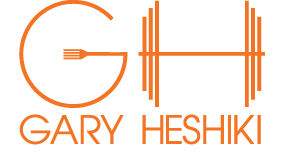Is __________ healthy? How to Read a Food Label
Photo by rawpixel.com on Unsplash
This list was recent published alongside the article "Is Sushi "Healthy"? What About Granola? Where Americans and Nutritionist Disagree by the NY Times.
Occasionally we stand in an aisle at the market and we're wondering, is this healthy? I don't see why technology can't be of some help there, but what's most alarming is that most of the list is either a raw ingredient or a pre-packed item which usually means it has a food label.
Of the 50 foods, assuming you aren't cooking from scratch, usually come prepackaged with a label.
- hummus
- popcorn
- peanut butter
- nutella
- granola
- chocolate
- coconut milk
- canned tuna
- feta cheese
- beef jerky
- greek yogurt
- turkey bacon
- yogurt
- dried fruit
- tofu
- cottage cheese
- polenta (it's technically cornmeal, but if it's polenta, that means it's now been cooked and seasoned, thus should come with a food label)
- smoked salmon
- sparkling water
- brown sugar
- rye bread
I left out pizza, as it could or could not be frozen so I didn't add that.
And of the 50, here are the raw, typically unprocessed ingredients:
- couscous
- quinoa
- shrimp
- tuna
- rice
- honey
- tilapia
- watermelon
- pork
- chicken
- salmon
- basmati rice
My two big take aways from this article:
1. Most people have an extremely vague sense of how to select food for a balanced nutritious diet. I understand this is a small sample size, but definitely indicative of the fact that we are extremely undereducated when it comes to knowing what is a solid quality source of protein, fat and carbohydrates. Sadly this article only covers the glaring issue of not knowing WHAT to eat and not how much to eat. We should know chicken (not fried) is probably a solid choice and possibly not know the portion sizing, instead the majority of Americans don't know either!
2. We don't know how to read a food label, or interpret a food label.
(Note: I understand that this has been a problem for years considering all the rumblings about attempting to redesign the label to make it even easier to understand. Sadly I don't think it's that difficult to understand but a'las sigh.... 'Merica.)
Starting from the top: Serving Size
Many manufacturers try to pull one over on consumers by listing 12g of sugar in one serving, not the whole package which contains 8 servings. Whatever imaginary label this comes from (I took this label off the FDA website) it contains a whopping 96g of sugar per package.
Your daily allowance of sugar should remain below 10% of total calories.
Total Calories
Learn to use percent Daily Values (DV) to help evaluate how a particular food fits into your daily meal plan. The calories and percentages listed are based off an adult consuming 2,000 calories a day.
A food item with 5% of DV of fat provides 5% of the total fat that this individual should consume a day. Percent daily values are for the entire day not only one meal or snack.
YOU may need more or less than 2,000 calories per day, so for some of the nutrients you're going to need more or less than the listed 100% DV.
You should also aim for lower amounts of saturated and trans fats, cholesterol and sodium. Look for higher amounts of vitamins, minerals and fiber. Most Americans do not consume enough fiber, which should be 35g/day for all adults.
Goes without saying but if a majority of your diet comes from fruits and vegetables without labels, you'll be better off.
Other Nutrients
- Protein
A percentage Daily Value for protein is not required on the label. Eat moderate portions of lean meat, poultry, fish, eggs, low-fat milk, yogurt and cheese, plus beans and peas, nut butters, seeds and soy products. - Carbohydrates
There are three types of carbohydrates: sugars, starches and fiber. Eat fruits and vegetables plus whole-grain breads, cereals, rice and pasta. - Sugars
Simple carbohydrates, or sugars, occur naturally in foods such as fruit juice (fructose) or come from refined sources such as table sugar (sucrose) or corn syrup.
It stands to repeat again: Added sugars will be included on the Nutrition Facts label in 2018. The 2015-2020 Dietary Guidelines for Americans recommends consuming no more than 10 percent of daily calories from added sugars.
Ingredients List
Decide what you want (and don't) in your food.
- Hydrogenated/partially hydrogenated oils (source of trans fats)
- High fructose corn syrup (not necessarily because it’s handled much differently than other sugars, but it usually indicates a non-nutritious food)
- Added sugars (including hidden sources like syrups)
- Artificial colors (example: FD&C Yellow #5)
- Canned items not labeled BPA free
- Atlantic or farmed salmon (instead of wild caught)
- Products from China (which has recently been busted for many food safety violations, such as melamine in baby formula and heavy metals in various foods and herbal preparations)
- Animal ingredients
- Gluten
- Non-organic
- Nitrates/nitrites
- High sodium
Photo by Alexandr Podvalny on Unsplash
When in doubt remember the following





